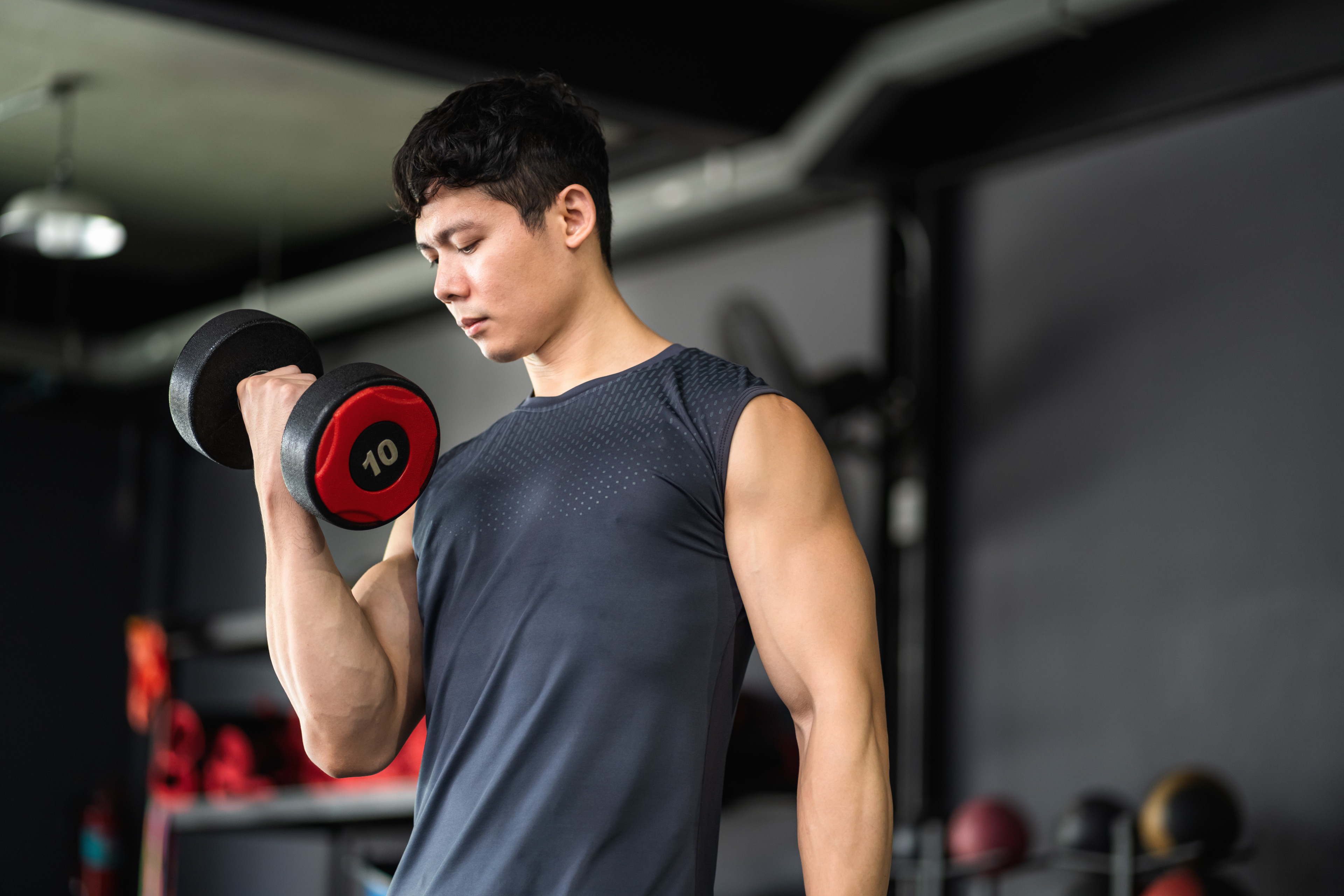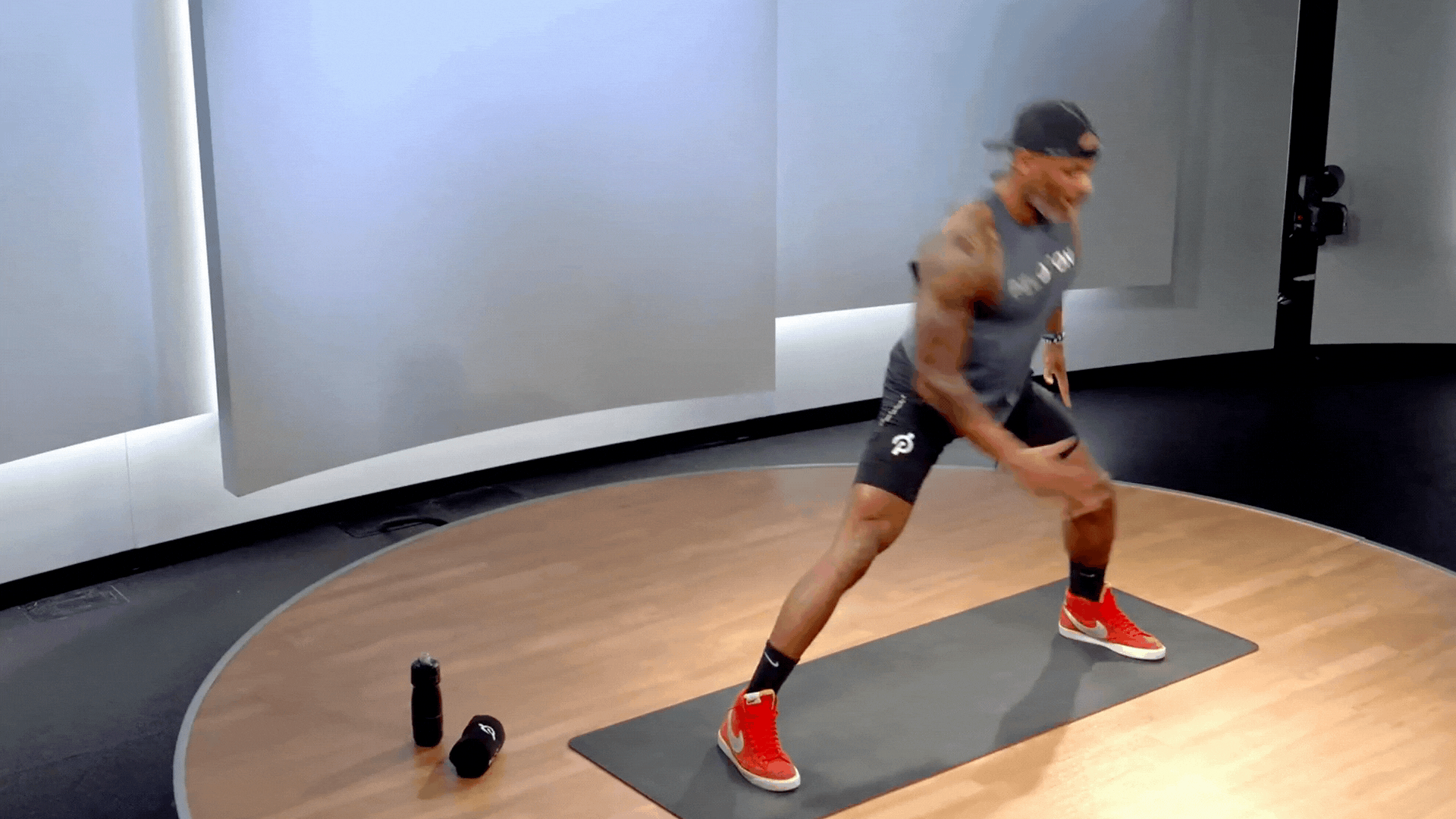
pipat wongsawang/Moment via Getty Images
Why Unilateral Exercises Deserve an Intentional Spot In Your Strength Routine
Unilateral exercises are more essential than you might realize.
By Lauren Mazzo•
What Exactly Are Unilateral Exercises?
The Benefits of Doing Unilateral Exercises
5 Unilateral Exercises to Boost Your Balance and Core Strength
Common Mistakes to Avoid When Focusing on Unilateral Exercises
Sample Workout Targeting Unilateral Moves
How to Incorporate Unilateral Exercises to Your Workout Routine
Typically, the exercises that get all the hype are the ones that work as many muscles as possible—think: compound strength moves that allow you to lift heavy, or even rowing, which works as much as 86 percent of your body. But there are times when using less of your body is actually a great thing.
Consider unilateral exercises that, by nature, focus on one side of your body at a time. By singling out one side while exercising, you can actually reap some special benefits, from increased demand on your core and reduced injury risk to less spinal loading. And you may not realize it, but most movements you do in daily life and sports are technically unilateral exercises, says Peloton instructor Andy Speer. That includes walking and running, for example.
Mind already blown? Read up on unilateral exercises, and learn why they deserve an intentional spot in your routine, according to fitness pros.
What Exactly Are Unilateral Exercises?
“Unilateral exercises are movements performed on one side of the body or using one arm or leg (instead of two) to perform the move,” explains Susane Pata, content strategist for the National Academy of Sports Medicine. It’s pretty literal: The prefix “uni-” means “one” and “lateral” means “to the side.”
Differences Between Unilateral and Bilateral exercises
“By definition, unilateral exercises use one limb, arm or leg, as the primary mover to perform the exercise,” Andy says. “Bilateral exercises use both arms or both legs simultaneously to perform the exercise.”
In reality, with many unilateral exercises, the non-working side of your body still gets involved to some degree (imagine lunges, for example). This doesn’t mean it’s a bilateral move. “The easiest way to think about it is if you push or pull with the same [amount of] force in each limb, you are performing a bilateral exercise. Think: your traditional squat, deadlift, bench press, or push-up,” Andy explains. In a unilateral exercise, however, the resistance load is mainly on one limb, Pata adds.
The Benefits of Doing Unilateral Exercises
Many of the movements you naturally do in daily life and sports are technically unilateral movements, Andy explains. “Running, cycling, field sports, throwing, and walking are all unilateral movements,” he says. Incorporating unilateral moves into your training prepares you for those actions, as well as even offering even more perks. If you want to drill down on the specific benefits of unilateral moves, here’s what you can expect to gain from adding them to your routine.
Build Focused Strength
In general, unilateral exercises may be better at building strength; research suggests that unilateral moves can result in comparable or better training results than bilateral moves. Because you can focus the work on one side at a time, you may be able to better isolate and build strength in specific muscles. This can be helpful if you have targeted strength goals, such as growing your glutes.
Correct Muscle Imbalances and Prevent Injuries
The focused strength training offered by unilateral moves can also be helpful for correcting muscle imbalances, which are linked to a higher risk of injury and reduced sports performance. When you’re working one side at a time, you avoid overusing your stronger, more dominant side, which can tend to happen during bilateral training, Pata says. This can help the weaker side catch up in strength and ultimately even out both sides.
Improve Balance and Stability
Maintaining good balance and stability is an important part of aging well and being an efficient mover. In lower-body unilateral exercises, for example, the adductors (inner thighs), glute medius, foot, ankle, and calves are all required to stabilize the body and create the force required to perform the movement, Andy says. Strengthening these stabilizer muscles is a huge benefit of unilateral training, he adds.
More Athletic Training and Better Performance
“Another benefit of unilateral training is the ability to perform multi-directional exercises,” Andy says. Working in different planes of motion (i.e. forward/backward, sideways, and rotationally) helps to challenge muscles in new ways, as well as train you for multi-directional movements that happen IRL. “These exercises challenge muscles, connective tissue, and coordination in a way that bilateral movements can’t. You’ll feel athletic and resilient by including these moves in your training,” Andy says. Not to mention, research shows that unilateral training can help boost strength and jump performance in sports that incorporate unilateral movements.
Boosted Core Strength
When you load one side of your upper body with weight, such as in a farmer’s carry or unilateral shoulder press, your core has to work to keep your torso upright, so you don’t bend sideways, Andy says. “The imbalance created by asymmetrical loading challenges one side to bear the weight while the other side has to stabilize based on the resistance load,” Pata explains. This results in more core activation even when doing non-core-focused moves.
Less Force on Your Spine
Loading the weight on one side of your body also reduces the vertical force placed on your spine. “Another benefit is the ability to load one leg with heavier weight but with less or no axial (spinal) loading,” Andy explains. “Using the same weight in a lunge or split squat you will load your leg with twice the amount of weight than if you perform a traditional bilateral squat.”
5 Unilateral Exercises to Boost Your Balance and Core Strength
Just because unilateral exercises work less of your body doesn’t mean they’re not powerful. “I find it effective to perform unilateral exercises that are compound movements, where the body uses several muscle groups collaboratively to perform a movement,” Pata says. “I especially favor moves that call on various muscles in the body’s core.” These five unilateral moves fit the bill.

Lateral Lunge or Side Lunge
Lateral lunges should be included in your training frequently, Andy says. A few form tips: Keep your toes pointing forward, your torso angle about 45 degrees, and don’t collapse towards the floor, he says. To make it harder, hold a dumbbell in each hand by your sides.
Start standing with your feet together.
Take a big step out to the side with your right foot, landing softly with your right toes pointing forward. Immediately bend your right knee and sit your hips back to lower into a lunge, keeping your left leg straight but not locked out. Allow your torso to lean slightly forward.
Push off your right foot to step it next to your left and return to the starting position.
That’s one rep. Repeat on the other side.

Single-Leg Deadlift
This classic move is one of the best exercises you can do for your posterior chain and balance, Andy says. It’s a favorite with Pata, too, who says, it’s a great way to work on the fundamental movement pattern of the hip hinge which is integral to performing a good squat and lunge. You can hold a weight in the hand on the same side as your standing leg, or on the opposite side to recruit slightly different muscles, Pata says; the former calls on more stabilizer muscles and can be a bit more challenging.
To do a single-leg deadlift correctly, “initiate the hip hinge by sliding your trailing foot on the floor behind you, then lifting it when you feel your hamstring start to stretch,” Andy says. And “keep the weight close to your front leg, not hanging under your face.”
Stand with your weight in your left foot, and your right foot behind you, toes just touching the floor. Hold a dumbbell in your right hand in front of your pelvis.
Slowly hinge at your hips to lower the dumbbell along the front of your left leg. Simultaneously lift your right leg behind you, going no higher than hip height. Keep your core engaged and right hip pointed toward the floor. Stop when the dumbbell is at shin level.
Slowly reverse the movement to return to the starting position. That’s one rep. Do the same number of reps on both sides.

Single-Leg Squat
This is one of Andy’s favorites for stability training, he says—and you don’t have to do a full pistol squat. Instead, try a single-leg squat with 1/3 or 1/4 range of motion, he says. “Do this with light weight or your body weight for 45-60 seconds for a serious burn and a ton of stability benefit from your feet to your glutes.”
Start standing with your weight in your left leg and your right extended in front of you so your foot is hovering off the floor. Clasp your hands in front of your chest or place them on your hips.
Hinge at your hips to sit backward, bending your standing knee and lowering into a 1/4 or 1/3 squat. Don’t allow your knee to move to either side; keep it tracking over your left foot, trying not to let it go past your toes.
Press into your left foot to stand, squeezing your glutes at the top. That’s one rep. Do the same number of reps on both sides.
Single-Arm Shoulder Press
In upper-body exercises such as a single-arm shoulder press, your core (notably the obliques and quadratus lumborum) is required to stabilize your torso to prevent side bending, Andy says. This adds a core challenge that you simply don’t get with a bilateral press.
Start standing with your feet hip-width apart and a dumbbell in your right hand, racked above your right shoulder, palm facing in.
Press the dumbbell overhead so it’s directly above your right shoulder. Keep your core engaged; don’t allow your ribs to flare open or your body to lean to the side.
Slowly lower the dumbbell back to the starting position. Do the same number of reps on both sides.
Common Mistakes to Avoid When Focusing on Unilateral Exercises
One of the most common mistakes with unilateral exercises is letting the load of resistance pull you out of neutral spine alignment, Pata says. It’s especially important to focus on form here, keeping your core engaged and hips and shoulders squared, if that’s what the move calls for. “One good cue to help prevent this mistake is to pretend like you’re loaded on both sides as you go through the movement, Pata adds.
Sample Workout Targeting Unilateral Moves
If you want to create a full-body workout comprised of unilateral moves, start with a dynamic warm-up. Then, begin the meat of the workout with low-impact, unilateral lower-body exercises, Pata recommends. Consider a series of box step-ups. Then, do the same for the upper body, using movements such as a resistance-band sword draw, single-arm dumbbell biceps curl, or single-arm standing dumbbell row.
Next, Pata suggests moving on to compound movements that utilize both the upper and lower body, like the TRX power pull and a reverse lunge to a single-arm dumbbell overhead press. And if you want a challenge, finish with unilateral plyometrics, like split squat jumps or kettlebell split squat snatches.
How to Incorporate Unilateral Exercises to Your Workout Routine
Every body and person is different, so there’s no one-size-fits-all answer on how to add unilateral exercises to your routine. “The number of exercises and amount of time spent on unilateral moves will vary depending on your training goal or focus at the time,” Andy says. The good news is that it’s not complicated: you can add unilateral exercises to your workout without needing to get too strategic or into the weeds.
Who Should (or Shouldn’t) Do Unilateral Exercises?
Honestly? “Everyone!” says Andy. “Barring injuries or limitations, everyone should include unilateral exercises in their training.” Any unilateral move can easily be modified or advanced to match your fitness level and needs.
How Often Should You Do Unilateral Exercises?
You can go ahead and include unilateral exercises in almost every training session, Andy says. In fact, he recommends that you include at least some unilateral work in most of your training sessions.
They don’t always have to be intense balancing moves or a whole lineup of unilateral exercises. For example, you may include some bodyweight single-leg glute activations before your heavy squat workout, add side planks to your core routine, or use single-arm rows to support your bench press and upper body strength. Try a mix of high rep, low weight and lower rep, heavier weight moves, Andy says.
“Be creative, have fun, and look for balance,” he adds. “There’s no right or wrong approach.”

Peloton App
Access thousands of classes with no equipment needed.
This content is for informational and educational purposes only and does not constitute individualized advice. It is not intended to replace professional medical evaluation, diagnosis, or treatment. Seek the advice of your physician for questions you may have regarding your health or a medical condition. If you are having a medical emergency, call your physician or 911 immediately.
Level up your inbox.
Subscribe for a weekly dose of fitness, plus the latest promos, launches, and events.
By providing your email address, you agree to receive marketing communications from Peloton.
For more about how we use your information, see our Privacy Policy.






